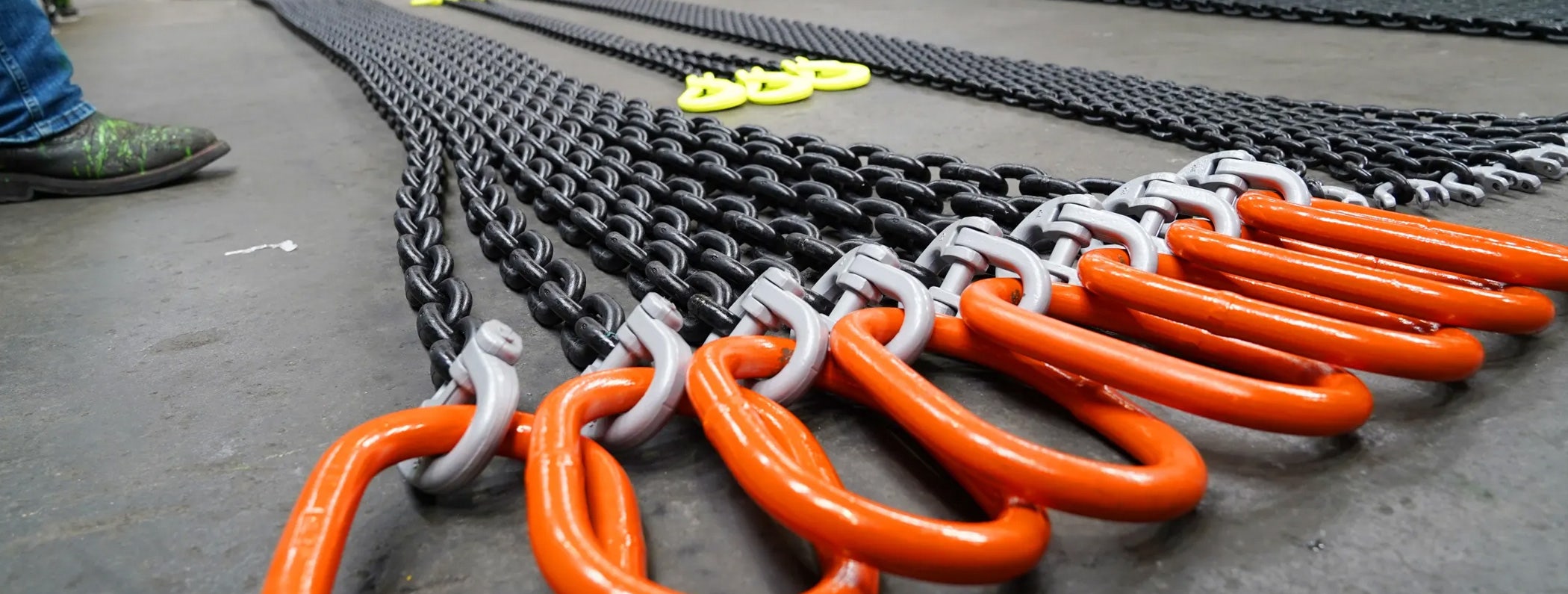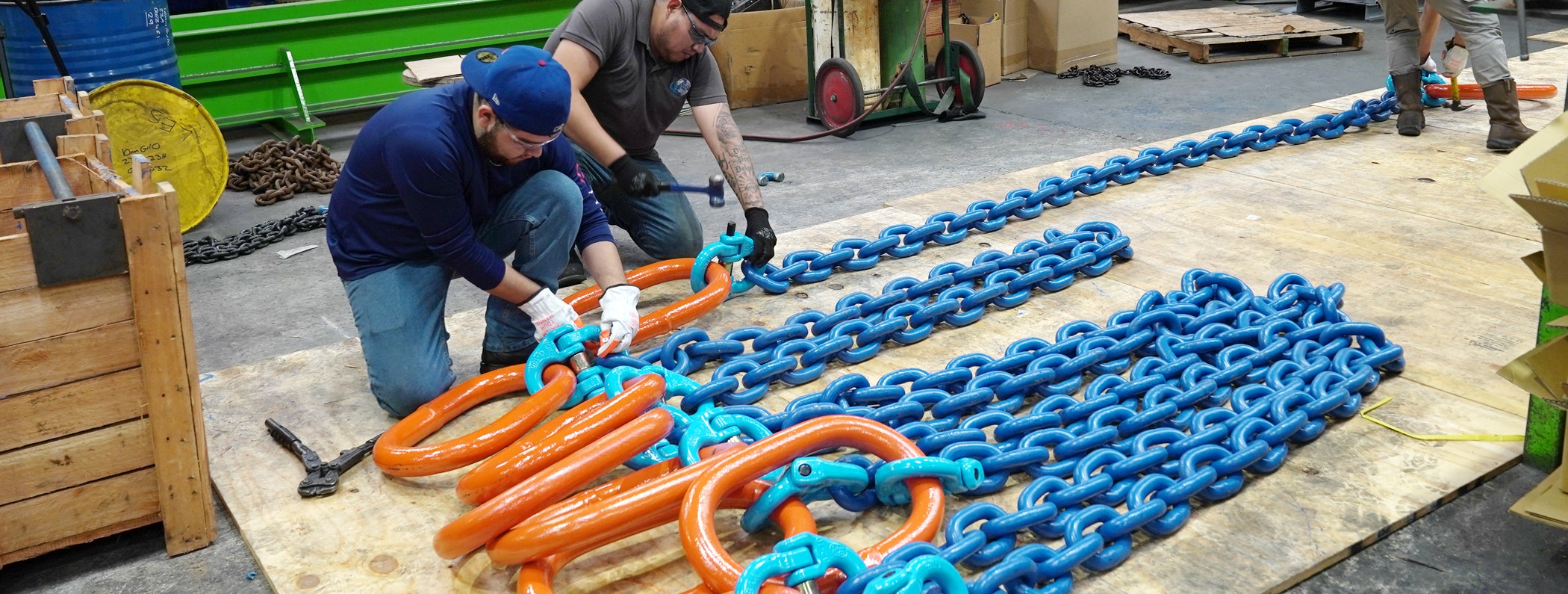Changes to ASME B30.9-2021: What Do You Need to Know
The American Society of Mechanical Engineers (ASME), which promotes the art, science, and practice of multidisciplinary engineering and allied sciences around the globe, is at the heart of global industrial safety standards. ASME standards have made strides in setting the bar high for public and worker safety, with presence in more than 135 countries.
However, improving public and industrial safety is an ongoing process. Keeping that in mind, ASME updates its safety standards and regulations periodically. In 2021, the B30.9 safety standards for slings underwent a few vital changes. The new version includes new additions, revisions, and other general changes.
If you want to stay ahead of the curve, you need to know and confer to the latest ASME standards. Don’t worry! We will help you understand what changes ASME made in 2021 to its rigging safety standards.
But first, let’s recap what ASME B30.9 standards mean.
A. What Is ASME B30.9 Standard?
ASME standards in volume B30.9 address the fabrication, attachment, use, inspection, testing, and maintenance of slings used for load handling purposes. The standards also extend to the slings used in conjunction with equipment described in other volumes of the B30 standard, except for restrictions given in ASME B30.12 and ASME B30.23.
In simple words, the standards talk about the safe use and handling of slings in specific industrial rigging applications. In addition to maintaining safe work conditions, ASME B30.9 standards can also help you ensure compliance with local regulations in your location.
It covers slings fabricated from:
- Alloy steel chain
- Wire rope
- Metal mesh
- Synthetic fiber rope
- Synthetic webbing
- Polyester fiber yarns in a protective cover(s)
Like all other AMSE standards, B30.9 is also designed for manufacturers, owners, employers, users, and those concerned with sling specification, buying, and maintenance. You can also refer to these standards if you are involved in training and safe use of slings and hooks with B30 equipment.
B. Understanding New Additions and Revisions to the ASME B30.9-2021 Standard
Before we get into the nitty-gritty of revisions made to ASME B30.9 standards in 2021, you should know that ASME B30.9-2018 was a substantial revision. The 2014 volume underwent a few significant changes in 2018, then came the 2021 update. In 2021, B30.9 standards underwent the following changes. These standards now supersede the procedures/regulations outlined in the 2018 edition.
Let’s see what’s new and what’s been revised.
1. Definition of an Endless Sling
The addition of a definition for an endless sling (alloy chain) is perhaps one of the most significant new changes to ASME B30.9 standards in 2021. According to the new definition, an endless sling (alloy chain) is a chain sling made from one continuous length of alloy chain with both ends joined by a welded link or mechanical coupling link.
2. Rigging Practices
Another significant change in the 2021 volume of B30.9 standards is rigging practices. ASME added the following new paragraph to the Section 9-1.10.4 (p) Rigging Practices.
The para reads:
If a mechanical coupling link is used to join chain links in an endless sling, the link should not bear directly against the load, a hook, or another fitting.
ASME made one more revision in the rigging practices for different types of slings, including, alloy steel chain slings, wire rope slings, metal mesh slings, synthetic rope slings, synthetic webbing slings, and polyester round slings, and high-performance round slings.
The 2018 edition of B30.9 standards said:
Slings in contact with edges, corners, protrusions, abrasive surfaces, or connecting hardware shall be protected with a material of sufficient strength, thickness, and construction to prevent damage unless the edges are adequately rounded to a suitable radius in accordance with WSTDA-RS-1, Section 4.6, the sling manufacturer, or a qualified person.
And now the 2021 edition says:
Slings in contact with edges, corners, protrusions, abrasive surfaces, or connecting hardware shall be protected with a material of sufficient strength, thickness, and construction to prevent damage unless the edges are rounded to a radius as recommended by the sling manufacturer, a qualified person, or in compliance with WSTDA-RS-1HP, Section 4.6.2.
3. Proof Tested Before or After Fabrication
This is a new addition to the General Section of the following chapters in ASME B30.9 standards.
- Section 9-2.6.1: New wire rope slings incorporating previously used or welded fittings shall have the fittings proof tested before or after fabrication of the completed sling.
- Section 9-4.6.1: New synthetic fiber rope slings incorporating previously used or welded fittings shall have the fittings proof tested before or after fabrication of the completed sling.
- Section 9-5.6.1: New synthetic webbing slings incorporating previously used or welded fittings shall have the fittings proof tested before or after fabrication of the completed sling.
- Section 9-7.6.1: New HP (high-performance) round slings incorporating previously used or welded fittings shall have the fittings proof tested before or after fabrication of the completed sling.
Another small, but important revision we saw is also about proof-testing.
In 2018, it said:
Prior to initial use, all polyester round slings incorporating previously used or welded fittings and all repaired slings shall be proof tested by the sling manufacturer or a qualified person.
In the 2021 volume, it now says:
New polyester round slings, incorporating previously used or welded fittings shall have the fittings proof tested before or after fabrication of the completed sling.
Apart from polyester round slings, these changes also apply to alloy steel chain slings, wire rope slings, synthetic rope slings, synthetic webbing slings, and high-performance round slings.
4. Rated Load
When it comes to rated load, ASME added connection hardware shape and size to the list of factors that “shall be” included in the rated load of a lift. These changes were made to the following sections of B30.9 standards in 2021.
- Section 9-2.5
- Section 9-4.5
- Section 9-5.5
- Section 9-6.5
- Section 9-7.5
5. Non-Mandatory Appendix A
One more significant addition to the 2021 B30.9-2021 standards is Non-Mandatory Appendix A. It talks about sling protection. This appendix is critical because it covers safety-related topics like figures on sling protection types against local bearing pressure or cutting damage and figures on sling protection types against abrasion.
C. How can Holloway Houston Help You adhere to ASME B30.9-2021 Standard?
As you can see, ASME has made a few critical revisions and new additions to the B30.9-2021 standards. If you want to comply with the latest workplace safety measures, this is the volume you will need to understand word-to-word.
Holloway Houston can help you stay updated with the latest ASME standards with ease. Our material handling experts are well-versed with safety regulations. They can help you choose the rigging equipment, follow the correct rigging processes, find certified rigging and lifting devices, and help get the equipment tested for the working load limit and other safety requirements.
Wrap Up
ASME sets the standards for workplace and public safety. The global rigging and lifting industry has looked up to these standards for decades. As ASME keeps revising its standards, you will need to understand the latest ones by heart to stay compliant. To this end, this post will help you get a glimpse of what’s new and revised in the 2021 ASME B30.9-2021 standards.
If you are looking for ASME-certified, high-quality lifting slings, Holloway Houston is your best option. We can also help you with lifting and rigging equipment testing. Check out our online store or contact us to get the rigging equipment you need today.
















